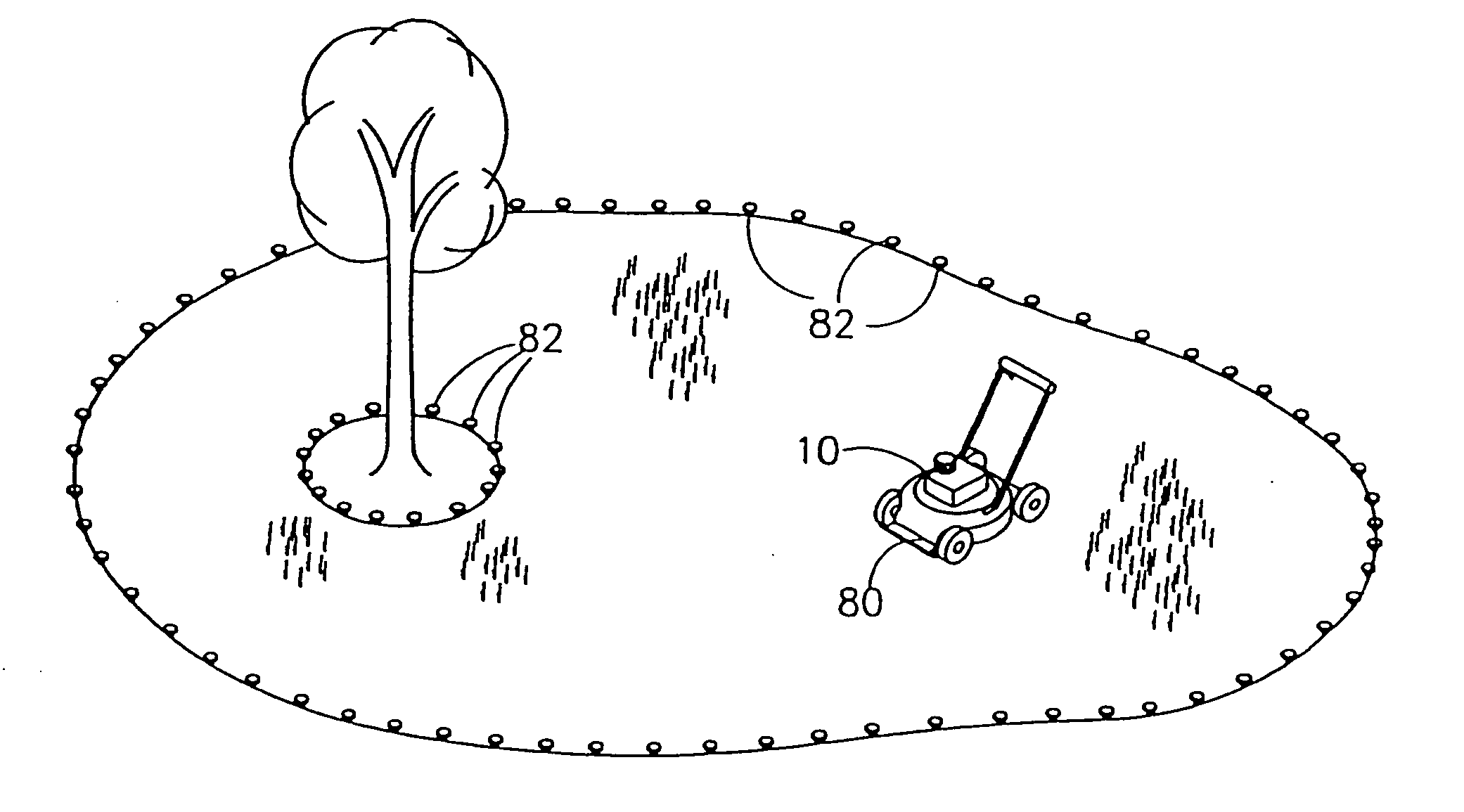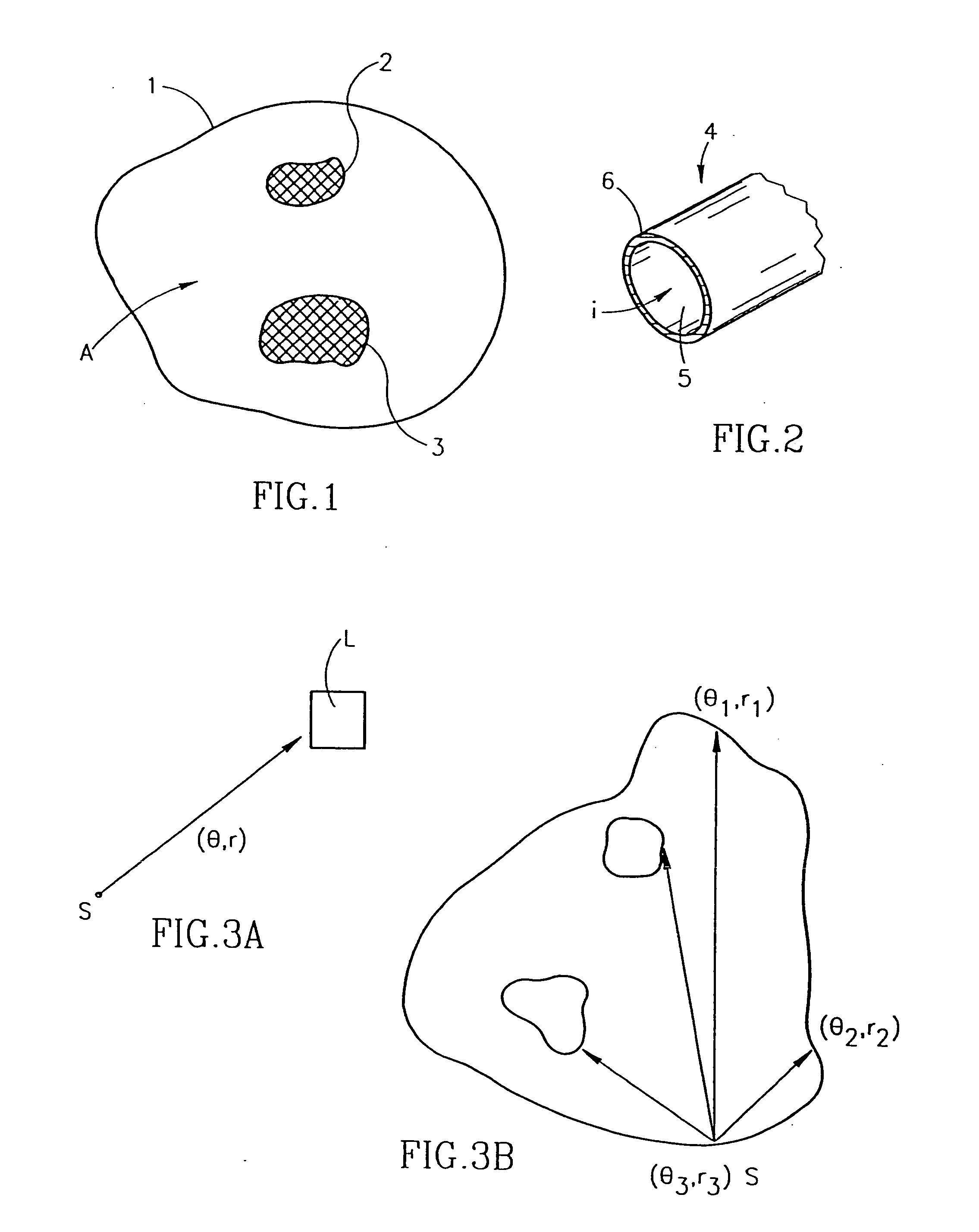Navigation method and system for autonomous machines with markers defining the working area
a technology of autonomous machines and working areas, applied in the direction of process and machine control, distance measurement, instruments, etc., can solve the problems of high cost of intermediate signs, inability to overcome, and robots perform very precise and delicate tasks, etc., and achieve the effect of minimal time and high precision
- Summary
- Abstract
- Description
- Claims
- Application Information
AI Technical Summary
Benefits of technology
Problems solved by technology
Method used
Image
Examples
Embodiment Construction
[0076] The present invention will be better understood through the following illustrative and non-limitative description of preferred embodiments.
[0077] Looking now at FIG. 1, the working area in which the robot must operate, indicated at “A”, is enclosed by a boundary 1. Within the working area there are “islands” in which the robot must not penetrate, which are shadowed and enclosed by boundaries 2 and 3. According to one embodiment of the invention, the robot is an automated lawn mower, and the area A is a lawn. Islands 2 and 3 may be, e.g., trees and their vicinities or flower beds. Thus, we wish the mower to operate only in areas in which grass grows, and to avoid other areas. Alternatively, the robot can be coupled to a floor sweeper or a floor polisher or any other device which has to scan a flat surface.
[0078] As stated, according to one particular embodiment of the invention, the boundaries 1, 2 and 3 may comprise a conducting wire. This type of boundary is shown in cross...
PUM
 Login to View More
Login to View More Abstract
Description
Claims
Application Information
 Login to View More
Login to View More - R&D
- Intellectual Property
- Life Sciences
- Materials
- Tech Scout
- Unparalleled Data Quality
- Higher Quality Content
- 60% Fewer Hallucinations
Browse by: Latest US Patents, China's latest patents, Technical Efficacy Thesaurus, Application Domain, Technology Topic, Popular Technical Reports.
© 2025 PatSnap. All rights reserved.Legal|Privacy policy|Modern Slavery Act Transparency Statement|Sitemap|About US| Contact US: help@patsnap.com



